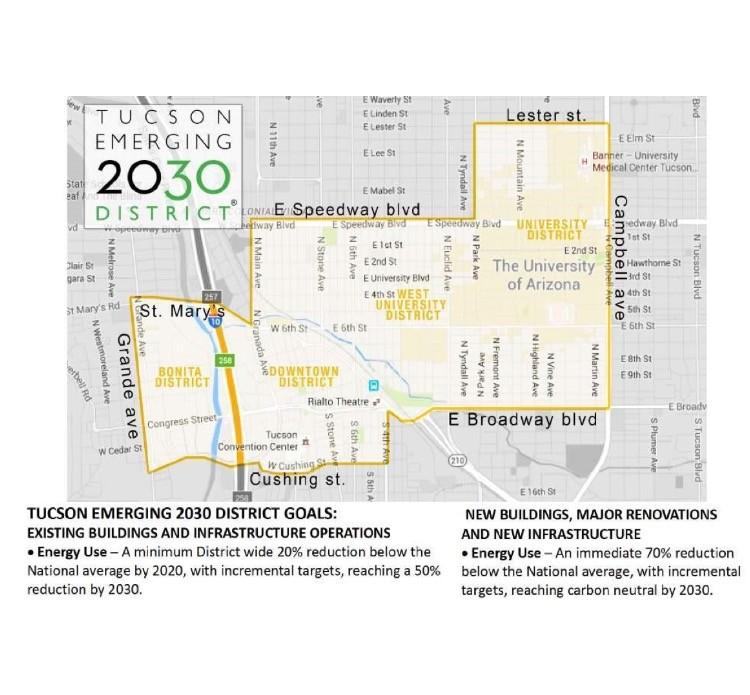The Old Pueblo is looking to add some new sustainability features throughout the city.
Tucson became an established 2030 District on Dec. 20, 2018, when the city, the University of Arizona and the county joined the 2030 Districts Network, a federation of Established 2030 Districts.
The 2030 Districts are a nationwide, private-public, nonprofit collaborative whose goal is to demonstrate that sustainably built buildings can be the most valuable buildings in the region, boosting the economy. The project’s goal is to dramatically reduce energy and water consumption as well as transportation emissions.
“The bottom line, as far as I’m concerned, is we’re looking for ways to mitigate climate change,” said John Eisele, the executive director of Tucson 2030 District.
RELATED: Cutting-edge agrivoltaics plan to be installed on top of ENR2 Building
Trevor Ledbetter, the director of the UA Office of Sustainability, was a driving force in making the partnership happen.
The university joined “very much to reinforce the commitments we have already been making in the space of sustainability over the last few months,” he said, as well as to address the university’s own emissions.
The georgraphy of Tucson makes the issue of sustainability even more pressing.
“For us, it’s all the more relevant, because we are in a semi-arid environment and we are in the middle of a drought,” Ledbetter said.
The specific goals set forth by the Architecture 2030’s Challenge for Planning include a 50 percent reduction in energy use, water use and transportation emissions for existing buildings and infrastructure operations below the national average by the year 2030. For new buildings, major renovations and new infrastructure, the goal is to reach carbon neutrality and reduce water use and transportation emissions by 50 percent by 2030.
“Yeah, it’s a big commitment, especially for the university,” Ledbetter said.
The UA makes up the majority of the area committed to the Tucson 2030 district.
Reaching these goals depends on the funding sustainability efforts receive.
Courtney Fey, a general manager at the Borderlands Brewing Company, a participating 2030 District business, said that its core values lined up with the project’s goals and its environmentally oriented brand.
“We think this is something the community needs and wants, so their values dictate our values, in a way,” Fey said. “We find it important to stay true to our customers.”
The 2030 District network calculates a building’s energy use and compares its energy use to the national average.
“That’s a starting point for a lot of business owners, because one of my favorite sayings is, ‘They don’t know what they don’t know,’” Eisele said.
This means businesses are too busy running their business to pay attention to what energy they could save.
Borderlands Brewing Company is looking at “how to align our goals to be sustainable with our business side,” Fey said. “How can you be sustainable while still making a profit? How do you implement these changes of sustainability without totally losing your business?”
She said one of the classes that 2030 District offers, called SCALE UP, gave the businesses ideas on how to answer these questions.
The Office of Sustainability hopes to also provide connections for the 2030 District by offering educational services and business expertise from the UA Eller College of Management.
“We have world-renowned faculty here who can help to kind of transfer some knowledge, do some more innovative and intentional research around resiliency and how our area needs to change,” Ledbetter said.
isele expanded on how owners are expected to improve sustainability.
“What we request is that the building owner commit to working with us towards the goals of the 2030 district,” Eisele said. “The idea would be then that they would commit to working towards the goals of the district of decreasing their energy use by 50 percent by 2030, based on the national average.”
Ledbetter said that the 50 percent-reduction goals aligns with the university’s idea for its sustainable future:
“By the time that 2030 rolls around … I hope that the UA has hit these goals,” Ledbetter said.
Follow Alana Minkler on Twitter









